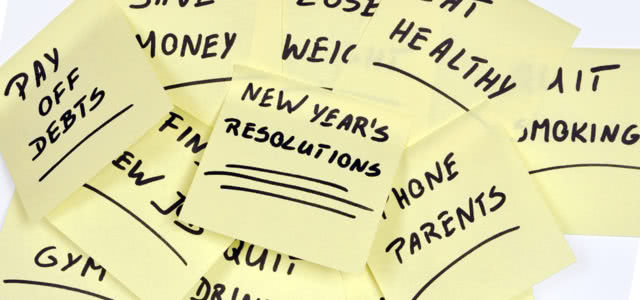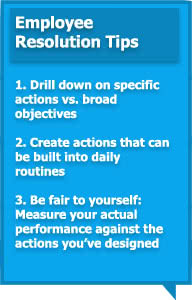Workforce Management
New Year’s Resolutions and Employee Improvement Plans: Three Tricks to Make Them Stick

Every new year, people around the world make resolutions to be better about something this year than the last. Whether it’s lose weight, be more social, or end a bad habit, New Year’s Day always dawns with hope and optimism. 92 percent of these resolutions fail, many before Groundhog Day.
While New Year’s resolutions are usually personal goals, professional improvement follows the same pattern. Annual performance reviews and bonuses are almost always tied to the calendar year. Motivated employees take this time to reflect on their performance and figure out how they can improve. Unfortunately, these resolutions will fail for the same reasons that people don’t lose the weight or be more social.
People that study these things will tell you that there are three tricks to making a New Year’s resolution stick. The same principles apply to making yourself more effective and productive at work. Consider these as you think about how to make 2014 the year you really show up as the A-player you want to be.
Employee Improvement: The Three Essentials
 First, the resolution has to be a specific action rather than a goal. Just like, “lose weight” or “get fit” doesn’t tell you what to do, deciding to be “more organized” or “more productive” is too vague. Instead, pick specific actions that support the goal. Resolutions like “always work off a to-do list” or “never leave email in your inbox” are likely to make you more productive and organized.
First, the resolution has to be a specific action rather than a goal. Just like, “lose weight” or “get fit” doesn’t tell you what to do, deciding to be “more organized” or “more productive” is too vague. Instead, pick specific actions that support the goal. Resolutions like “always work off a to-do list” or “never leave email in your inbox” are likely to make you more productive and organized.
Second, the action has to be part of a daily routine. Things that can be done “when you get around to it” won’t be done. On the other hand, if you commit to spending one minute doing sit-ups and pushups before you shower in the morning, then it will be easier to stick to the resolution. Who doesn’t have an extra 60 seconds? Set your alarm for a minute earlier if you have to. In the office, setting a specific time for the activity is more likely to make it happen. Try first thing in the morning, or first thing after lunch. (Use the recurring meeting function on your calendar as a reminder.)
Finally, you have to measure yourself against the goal. How many days last month did you do the sit ups? How many days did you leave have a clean inbox? How many days did you do the specific actions that you know will make you better at your job.
The new year is a time for aspirations about how we can become better and more effective in our jobs. But aspiration alone won’t get you where you want to be. Instead, try to pick one or two key specific work habits that you know you would help you be better at what you do, and focus on sticking to those. If you can do that, 2014 will be a year where you really shine at work.
For more material on how to empower your workforce for the new year, be sure to check out Top 10 Workforce Management Software report as well as our comprehensive human resources resource page.






